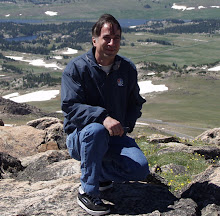One of the salient features of religious beliefs is that during transition, before one passes over to heaven or hell, one has to undergo a judgment. The Ancient Egyptians, Tibetans, Christians, Muslims and many others all have and had their judgment scenes in their theological concepts. This is ingrained in the eschatology of religion and has, as a matter of fact, a basis of truth which we shall see later as we consider the bardos. It will suffice here to describe certain aspects of the Judgment scene.
The Judgment scene of almost every religion consists of a judge, a weigher of the scales, a scribe, and of course, the soul being judged. To Ancient Egyptians, Osiris was the judge of the soul, Anubis the weigher of the scales, while Thoth was the scribe. The human soul was often depicted as hawk-headed. In Zoroastrianism, Mithras or sometimes Zoroaster sits on the judgment seat, with Rashnu acting as weigher and Sraosha as recorder. Tibetans called their magistrate Dharmaraja and their scribe Shinje--the monkey-headed one. Christians believe that Jesus would be the one to judge the \"quick and the dead,\" with angelic personnel acting as his amanuensis.
In the Judgment scene, as conceived by the ancient Egyptians, the Ab, or heart of the soul is weighed against Maat, or Truth, symbolised by a feather. The deceased makes a long confession, affirming his or her goodly works. The negative works of the soul goes unstated and unproclaimed--the soul hoping that its past sinful deeds are overlooked and not revealed. But then comes the weighing of the scales, where the statements of the soul are gauged of its truth. When found not to measure up to its honesty, the soul is led to hell to be tormented by Typhon, who is one of the presiding demons; otherwise, it is shown the way to paradise. The Judgment scene of all religions follows more or less along similar lines.
According to some religious and cultural beliefs, prior to the Judgment or the entry into the underworld, the soul had to cross a river or rivers, before passing on to its destination. The soul is usually led across the river in a boat or by using certain bridges. Ancient people used these symbols to signify the processes of transition. Muslims call the bridge \"Sirat,\" while followers of Zoroaster call it \"Chivat.\" Ancient Greeks called the underworld rivers Styx, Acheron, Cocytus, and Phlegethon. These named rivers correspond to the four streams of the Garden of Eden: Pison, Gihon, Hiddekel, and Phrath. Occultly, they probably refer to the four etheric planes. Scandinavians also believe in a river that souls in the cthonian world had to cross. They call this \"Wimur.\" Ancient Babylonians believed that the soul had to cross the Huber river prior to reaching the \"mountain of justice,\" or the Judgment scene.
Psychologically, rivers, oceans, pools, and lakes all refer to the subconscious element within man. In the depth of the Freudian \"id,\" lurk various monsters--phobias, psychosis, neurosis, and repressions. In an occult sense, these monsters of the psyche are known collectively as the Dweller on the Threshold. Crossing rivers in the context of its symbolism, entails encountering these monsters, these repressed images in the death process; and indeed, according to Tibetan thanatology, this is exactly what occurs in the bardo. All religious doctrines teach of the danger that the soul may have to face in the intermediate state.
Subscribe to:
Post Comments (Atom)

No comments:
Post a Comment